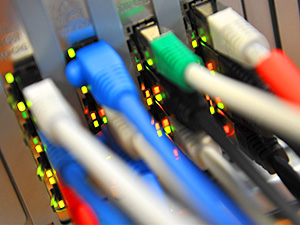October 18th, 2017
Ethernet in Retrospect

When we first started to consider adding Ethernet to our real-time system almost 12 years ago, we came upon a crossroads— Should we use Windows built-in NDIS drivers or go the long rocky road by developing our very own Ethernet drivers?
In the end, we settled on the latter, a complex in-house driver solution. Was it worth it? Absolutely! Several points can be made proving that it was exactly the right decision.
First and foremost is the performance level that we are able to achieve with out own drivers. Our drivers variant is able to reach 99.8% of the theoretical bandwidth even with 10 Gigabit Ethernet, which would not be feasible with NDIS at all. Needless to say, this also incorporates the well-known Kithara real-time performance. Thanks to constant optimization and verification with the Kithara real-time system a maximum jitter of only a few microseconds is possible with Ethernet.
In-house drivers, however, also entail that new controllers have to be implemented into our system at first as we do not just automatically acquire such driver functions from NDIS updates. For the support of a single controller this can easily take several weeks of development time. However, as before, this has turned out to be very much worth the effort as well. All controller-specific functions can be utilized whereas almost the entire range of network controllers by Intel and RealTek are fully supported.
Also, our Ethernet drivers are the actual base for some of the most crucial real-time technologies at Kithara, such as machine vision with GigE Vision or automation with EtherCAT. Coming soon, device synchronization with the Precision Time Protocol will also be added to the list. (See Blog Entry: Time Travel).
Speaking of the future, our next and certainly not the last milestone for Ethernet will be the support fro 40 Gigabit Ethernet via QSFP+ transceivers, which we expect to achieve a similar performance quality as our previous Ethernet functions. It is safe to say that we really look forward to all upcoming developments surrounding Ethernet and will be happy to continue being a part of them.
